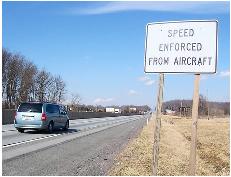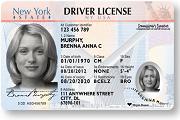 Years ago, one sunny Sunday afternoon, I was driving home from visiting friends at college and received a speeding ticket. I didn’t realize it at the time, but calculus played an important role in my citation.
Years ago, one sunny Sunday afternoon, I was driving home from visiting friends at college and received a speeding ticket. I didn’t realize it at the time, but calculus played an important role in my citation.
You see, this was no ordinary speeding ticket, the kind where a police officer paces the offender or uses radar to measure a vehicle’s speed. My speed was calculated from an airplane high above the road. And the Mean Value Theorem clinched the case.
Aerial speed enforcement works like this: large marks painted on the road divide the highway into quarter-mile intervals. A pilot flying overhead uses a stopwatch to time a suspected speeder from one mark to the next. Say the pilot records a time of 12 seconds; a simple calculation converts one quarter mile per 12 seconds into 75 miles per hour; this information, the average speed on this interval, is radioed to the police on the ground who then stop and ticket the driver.
What I didn’t realize at the time was how crucial calculus is in all of this.
A fundamental theorem of calculus, the Mean Value Theorem (MVT), relates the average rate of change of a function with the instantaneous rate of change of the function. Suppose we have some function of time, , and suppose that we know the value of this function at two times, say
and
. The average rate of change of
between
and
is
The MVT tells us that, as long as is a differentiable function, then at some time between
and
, say at t = c, the instantaneous rate of change of
must have been equal to the average rate of change of
from
and
. That is,
where is the derivative of
, the instantaneous rate of change of
.
What does this have to do with my speeding ticket? Well, as I’m moving along the highway in my car, the pilot records two values of my position function, , at two different times,
and
. The pilot then computes my average speed
Here’s where calculus comes in. The Mean Value Theorem says that, at some point between those two times my instantaneous speed must have been equal to my average speed. If my average speed was above the legal limit, then at some time between and
, my instantaneous speed must have been above the limit, and at that moment, I was guilty of speeding.
I wonder if it would have helped to argue that my position function wasn’t differentiable!


